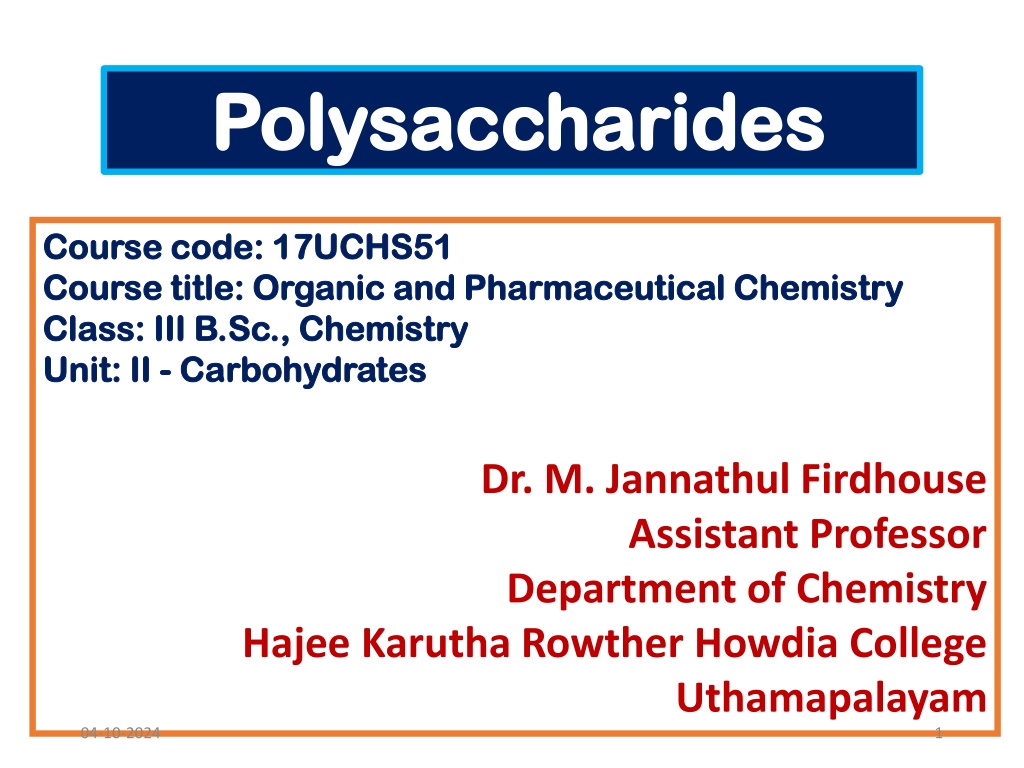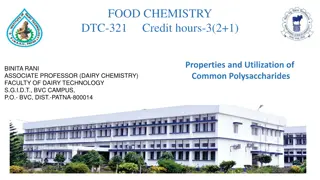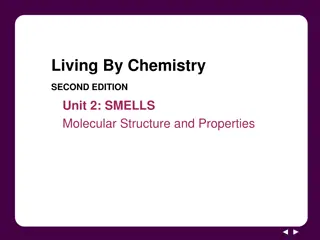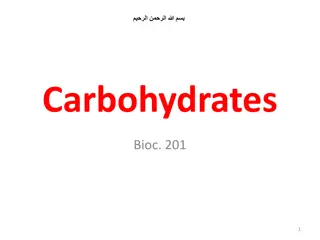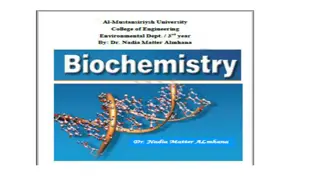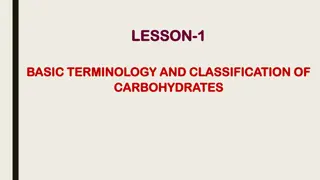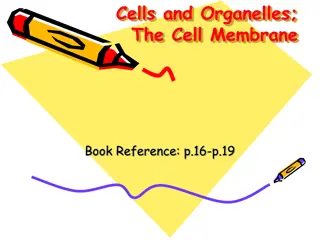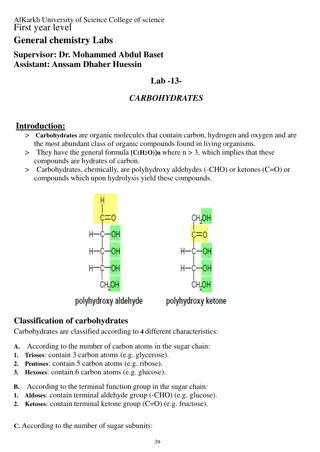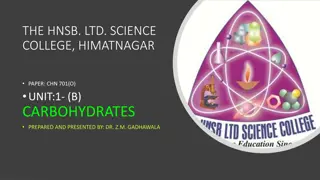Understanding Polysaccharides: Structure and Function in Chemistry
Polysaccharides are complex carbohydrates made up of multiple monosaccharide units linked by glycosidic linkages. Examples include starch, cellulose, and glycogen. Starch, a major plant carbohydrate, consists of amylose and amylopectin. Amylose forms a linear structure, while amylopectin is highly branched. Both polymers are composed of glucose units. This article explores the structure of starch, its extraction process, and the differences between amylose and amylopectin.
Download Presentation

Please find below an Image/Link to download the presentation.
The content on the website is provided AS IS for your information and personal use only. It may not be sold, licensed, or shared on other websites without obtaining consent from the author. Download presentation by click this link. If you encounter any issues during the download, it is possible that the publisher has removed the file from their server.
E N D
Presentation Transcript
Polysaccharides Polysaccharides Course code: 17UCHS51 Course code: 17UCHS51 Course title: Organic and Pharmaceutical Chemistry Course title: Organic and Pharmaceutical Chemistry Class: III B.Sc., Chemistry Class: III B.Sc., Chemistry Unit: II Unit: II - - Carbohydrates Carbohydrates Dr. M. Jannathul Firdhouse Assistant Professor Department of Chemistry Hajee Karutha Rowther Howdia College Uthamapalayam 04-10-2024 1
Unit II Polysaccharides: structure of starch and cellulose- uses of cellulose. 04-10-2024 2
Polysaccharides These carbohydrates give a large number of monosaccharide units on hydrolysis. These monosaccharide units are joined together by linkages are called glycosidic linkages. The common and polysaccharides - general formula (C6H10O5)n. Polysaccharides are not sweet in taste, so they are called non-sugars. Examples are starch, cellulose, glycogen, etc widely distributed 04-10-2024 3
Starch Starch Starch is the major form of stored carbohydrate in plants. general formula - (C6H10O5)n It is the most important source of carbohydrates in human diet. Commercial sources of starch are wheat, rice, maize, potatoes, barley and arrowroot. The grains are soaked in water to soften the material and crushed to break the cell walls. The pulp thus obtained is carried by a stream of water to a fine sieve. The form of milky suspension is allowed to settle down and decanted. It is finally dried in the air or in oven. 04-10-2024 4
Structure of Starch Structure of Starch Starch is not a pure compound. It is composed of a mixture of two polysaccharides: amylose, an essentially linear polysaccharide, and amylopectin, a highly branched polysaccharide. Both forms of starch are polymers of -D-Glucose. Amylose forms a colloidal dispersion in hot water and gives blue colour with iodine. Amylopectin is completely insoluble in water and gives no colour. Natural starches contain 10-20% amylose and 80- 90% amylopectin. 04-10-2024 5
Amylose Amylose molecules consist typically of 200 to 20,000 glucose units which form a helix as a result of the bond angles between the glucose units. -1,4 glycosidic linkages 04-10-2024 7
AMYLOPECTIN Amylopectin differs from amylose in being highly branched. Short side chains of about 30 glucose units are attached with 1 6 linkages approximately every twenty to thirty glucose units along the chain. Amylopectin molecules may contain up to two million glucose units. The side branching chains are clustered together within the amylopectin Molecule. 04-10-2024 8
Cellulose Cellulose is a polymer of -D-Glucose, which in contrast to starch, is oriented with CH2OH groups alternating above and below the plane of the cellulose molecule thus producing long, unbranched chains. The absence of side chains allows cellulose molecules to lie close together and form rigid structures. Cellulose is the major structural material of plants. Wood is largely cellulose, and cotton is almost pure cellulose. Cellulose can be hydrolyzed to its constituent glucose units by microorganisms that inhabit the digestive tract of termites and ruminants. 04-10-2024 10
Cellulose Nitrate First prepared over 150 years ago by treating cellulose with nitric acid, is the earliest synthetic polymer. The fully nitrated compound, --[C6H7O(ONO2)3]n--, called guncotton, is explosively flammable and is a component of smokeless powder. Partially nitrated cellulose is called pyroxylin. Pyroxylin is soluble in ether and at one time was used for photographic film, nail polish and lacquers. The high flammability of pyroxylin caused many tragic cinema fires during its period of use. Furthermore, slow hydrolysis of pyroxylin yields nitric acid, a process that contributes to the deterioration of early motion picture films in storage. 04-10-2024 11
Cellulose Acetate C6H7O(OAc)3]n--, is less flammable than pyroxylin, and has replaced it in most applications. It is prepared by reaction of cellulose with acetic anhydride and an acid catalyst. The properties of the product vary with the degree of acetylation. An acetone solution of cellulose acetate may be forced through a spinneret to generate filaments, called acetate rayon, that can be woven into fabrics. Viscose Rayon, is prepared by formation of an alkali soluble xanthate derivative that can be spun into a fiber that reforms the cellulose polymer by acid quenching. The product fiber is called viscose rayon. 04-10-2024 12
04-10-2024 13
